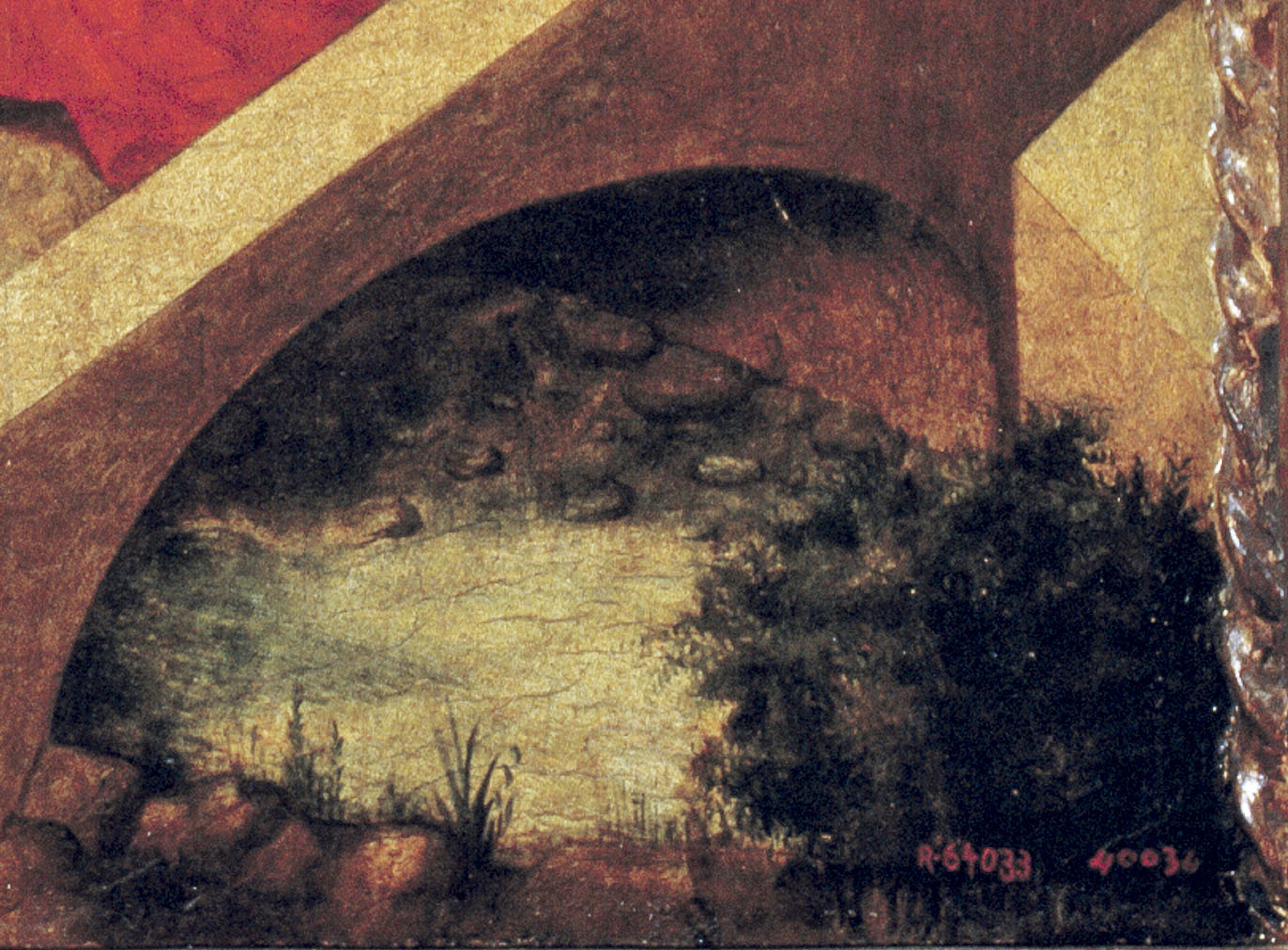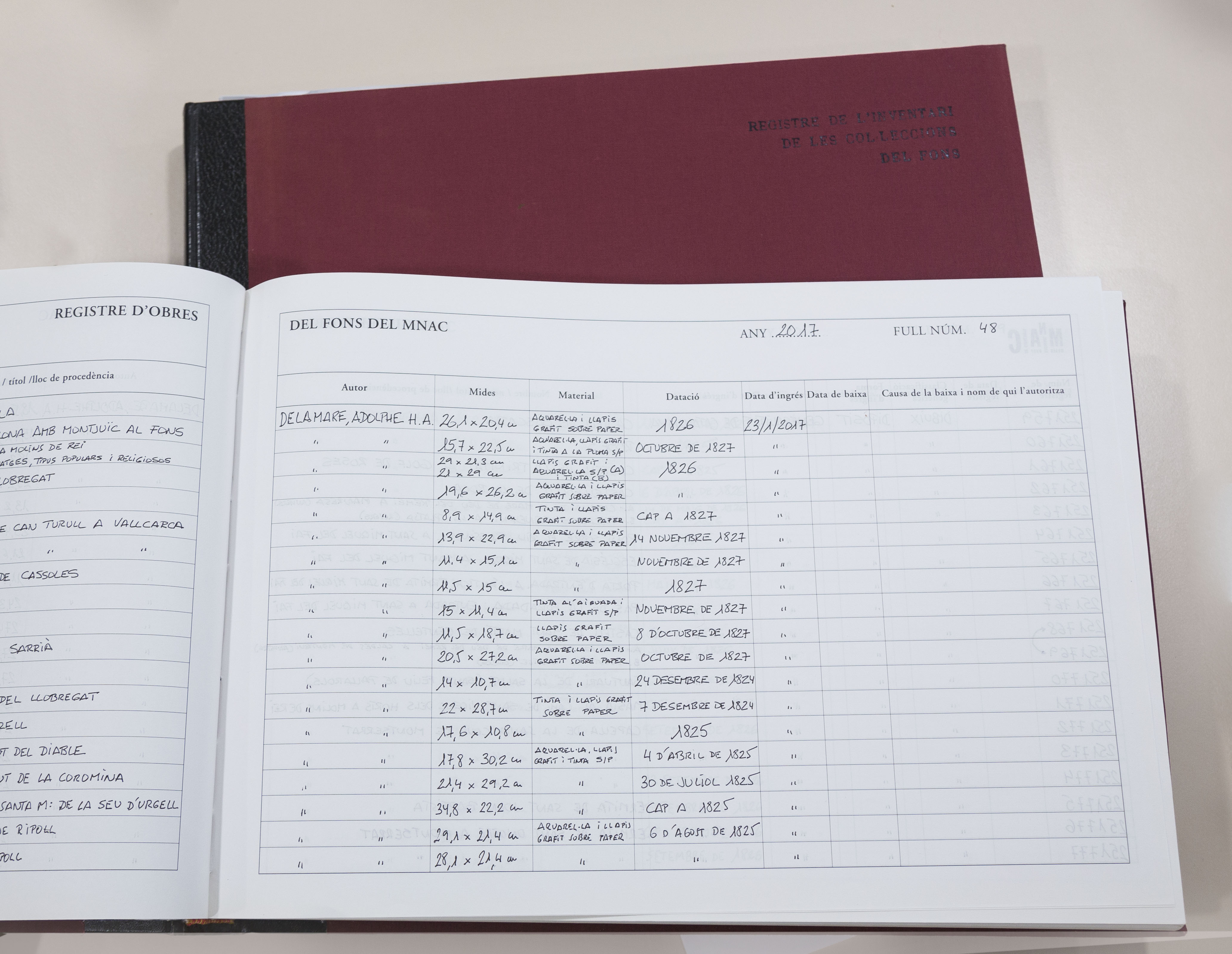Jordi Casanovas
In of the process of adding new pieces to the Museu Nacional’s collection, a series of steps are followed methodically that culminate with the admission of the works to the museum and the assignation of a registration number that they will always have. This identifier will prove to be crucial in the tasks of inventorying and cataloguing the works in an institution.
The register of the Museu Nacional: a little bit of history
The history of the museums in our city has been very rich and complex ever since the Reial Acadèmia de Bones Lletres de Barcelona, the first museum to be designed as such, opened in 1837. New museums were subsequently created, while others disappeared and their collections were incorporated in the new institutions that were being created. At every step each institution kept a more or les exhaustive inventory of its collections, and when one museum’s collections were moved to another, attempts were made to show which objects came from which museum. In these early days, there was no accurate register of all the works conserved, and it was often the case that the real origin of some objects was unknown, and even how they had come to the museum. Other collections coming from some donations, loans or bequests were better documented.
In the autumn of 1931 the museums’ technical section was set up, based in El Poble Espanyol on Montjuïc. Its goal was to inventory the works from different museums that would be installed in the various spaces that had been planned at that time. This overall reform plan was necessary due to the disappearance of the Provincial Antiquities Museum, in Saint Agatha’s Chapel in Plaça del Rei, and also the Museum of Decorative and Archaeological Art that used to be in the old arsenal of the Ciutadella. This was forced to move, as its premises were needed for the Parlament de Catalunya. The old Provincial Museum was the first to have a printed catalogue and it was already marking its pieces by first painting on the number and later using very characteristic labels.

Marking of one of the Museum’s latest acquisitions: the panel of The Beheading of Saint Baudilus by Lluís Dalmau, 15th century (2017)
The opportunity arose to install some of these new facilities on the mountain of Montjuïc, making use of some of the buildings and pavilions that had been left empty when the 1929 International Exhibition closed the following year. Our Palau Nacional was one of them. The new museums’ register materialized in a collection of cardboard files divided into five series (numerical, by subject, chronological, topographic and by provenance). This file-based register is now kept in the MNAC and is still a very useful tool for finding out certain details. The numbers in the register are still valid in the majority of cases, although adaptations have been made in each museum in order to incorporate new admissions.
Volume of the Museu Nacional register
At the present time the Museu Nacional has a collection of about 300,000 pieces, corresponding to the medieval and modern art collections and to the material in the Cabinet of Drawings and Prints (GDG), the Photography Department, and the Numismatic Cabinet of Catalonia (GNC). All this material is governed by a single register of works, except for the GNC, which, although it is part of the museum, has its own separate register.
The reason for the gaps in the numbering
After the Museu Nacional was created it was decided that new admissions would not be registered continuing on from the last number given, 157012, and that this new era would begin with a new series, leaving a gap in the numbering and beginning with 200000.
The reasons for this gap can be explained by the fact that in the MAC’s collection there were an indeterminate number of pieces that had not been registered. They could therefore be inventoried with the unused registration numbers, and that is what we are doing. In the register as a whole we know of other gaps in the numbering. For the admission of important collections, in some cases the new series began with a round number, probably in an attempt to individualize it better, and to make it easier to identify, as a sort of mnemonic resource. Since this new numbering began in 1991, 51910 works have been inventoried, including examples of painting, sculpture, pieces of precious metalwork and jewellery, textiles, drawings, prints, collections of photographs and photographic material, posters, furniture, coins and medals of all periods and tendencies.
A permanent identifier
The identification number is noted down in the handwritten registration book along with the main data of the work, such as where it came from, the title, the maker, the material, the size and the date of admission. The handwritten registration books are kept at the museum along with the computerized registers.
From the moment they are admitted, all reference to any of the works will be made using this number. When a work passes through the restoration workshop, whether in order to write a report on its condition or to carry out restoration work, its number will be an unavoidable reference. The same is the case if, due to its characteristics, it has been decided to incorporate it immediately in the rooms of the permanent collection, or whether, for organizational reasons, it is placed in the reserve. In all cases the reference number will be essential to be able to locate it at any time and place it correctly in relation to all the works in the museum at that time, in the building itself and elsewhere. All this can be done easily because after it is admitted, and from the moment it is assigned a registration number, a file is created in the database where all the necessary information will appear, which may be added to and changed based on the research and the studies that are done on each work. When it is necessary to carry out any procedures, formalities or research in relation to it, the registration number will be the key to accessing different information relative to its main characteristics, the place where it is, its condition, the work that has been done on it, its record of transfers and the exhibitions it has been part of. It is also a basic tool when searching for groups of works that this work may be part of.
Placing the registration number
This number is put in a clearly visible place, using materials that are easy to erase but which make it possible to quickly identify the work. This may seem surprising if we only think in terms of purely aesthetic reasons. It may also be the case that for various reasons the same piece may have more than one number and these may still be seen on a work, one next to the other sometimes, as a reflection of this object’s history.

One of the caskets in the Plandiura Collection with the old labels
One of the most frequently repeated cases is that originating in the Spanish Civil War. Many people who had a collection and were worried about what might happen to it ensured that the Servei de Conservació de Monuments i Defensa del Patrimoni Artístic (Monument Conservation and Artistic Heritage Defence Service) took charge of it. When they handed it over they were given a number and this was written on each of the pieces. As this was done by museum staff, they followed the same method as they used on works in the museums. After the war these works were returned to their owners, as it was temporary storage, but some years later a considerable number of these works came back to the museums, as donations, bequests, acquisitions or loans, and they were given a new number. For whatever reason the previous numbers were not erased and they remained as a testimony to a difficult period.

Left, the definitive register, and right, the number it was given in the first days of the Civil War when this work was seized.
It is basically a similar case to the labels and inscriptions of all kinds that are found on the backs of many works and which enable us to get a better understanding of the histories of some of them. It is a study subject that has been worked on a lot lately, but that is another story.
Related links
The registrar in collections management: an emerging profession / 1
The registrar in collections management: Risk Management/2
The Palau Nacional, a building steeped in history/ 1
Registre i investigador d'inscripcions hebrees











